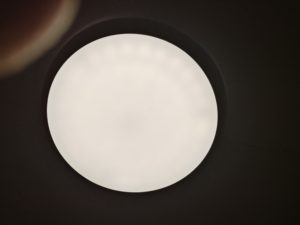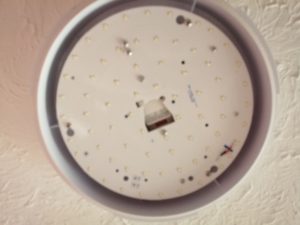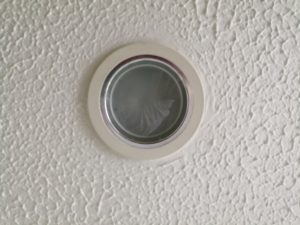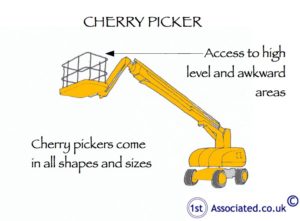LED Lighting
Save Cost, Cut Maintenance, Protect the Environment
What is Special about LED Lighting?
There are four main advantages of LED lighting:
Save 70% to 90% on lighting Electricity
LED lighting is getting more efficient all the time as the technology gets better. Prices have dropped hugely since around 2015 so that LEDs have never been more cost effective to buy and to use. Compared to Fluorescent lights, the best LED lights save anything up to 75% of the electricity used. Compared to traditional incandescent and halogen lamps savings can exceed 90%.

Helps the Environment
Electricity supply is a major contributor to climate changing emissions. Energy Efficiency is one way we can contribute to sustainability, show respect for God, and help protect all he has made.
No more Changing Light Bulbs
Whilst nothing lasts forever, the best LED lamps can produce light for 100,000 hours or more without needing attention (around 11 years of 24/7 usage). Not quite ZERO maintenance but many times less than with other lights.
As with anything, quality is important. An LED light does not ONLY consist of an LED chip, it also has other components like a heat sink to keep the LED chip cool, reflectors or lenses to optimise the distribution of light and to define the beam angle, and electronics which convert mains power into a form the LED can use.
It is worth paying a little more for quality – especially important for light fittings at height where access for maintenance can be difficult and expensive. Look for a 10 year plus warranty for high or safety critical lights. Consider doubling up on the most critical lights such as aircraft warning lights on steeples.
For more general light fittings and bulbs look for a 3 to 5 year warranty from a well-known manufacturer.


Other Articles that may be of interest
We have written many surveying articles which may be of interest to you:
http://www.1stassociated.co.uk/ceiling-lights.asp
http://www.1stassociated.co.uk/electrics-are-they-safe.asp
http://www.1stassociated.co.uk/wideshut.asp
Safety

LED Lights are Cool
LED lights should never get too hot to touch so will never get hot enough to cause a fire, or burn skin. This is in stark contrast to halogens which can reach “hot oven” temperatures causing painful burns if handled by the unwary.
No more burnt fingers changing light bulbs!
No more Climbing Ladders
LED lights last a very long time drastically cutting the need to climb stepladders to change light bulbs. This is particularly relevant to the older demographic where a fall from even 2 or 3 steps up can cause serious injury.
Always safety first when working at height
Use a secure ladder / stepladder, or platform, comply with safety instructions, and never work alone.
What are the Best Places to fit LEDs?

Hard to access Places
The best use cases for LED lighting are when a light is difficult or expensive to access – In these cases, it is recommended to use high quality fittings where the LEDs are throttled down to well below their design output, featuring over-sized heat sinks and the very best high quality electronics. High end street lights, flood lights, and commercial / industrial LED lighting can in some cases have a warranty as long as 10 years, and a design life considerably longer.
Use quality LED lighting to avoid the high access costs of regularly working at height – cranes and cherry pickers are expensive!
Possibly the very best case for LED lighting would be an aircraft warning light at the top of a steeple or other tall building. In such cases, it can easily cost <£1,000 just to hire a cherry picker or otherwise gain safe access even before you pay for a new light or the labour of the person changing it. In such a case, it is well worth spending an extra £100 to £200 on an extra high quality LED fitting that you can more or less fit and forget (your children or maybe even your grand-children can deal with the next lamp change).
Replacing Broken or Worn Out Fittings
LED fittings now cost no more than comparable fluorescent, metal halide, or sodium lamps, and in some cases less – especially where a battery backup is involved. With lower electricity consumption and maintenance requirements than other fittings, why use anything else?
For light bulbs the cost of LEDs is a little higher than halogens or incandescents, but 90% energy savings soon claw back the extra cost.
What about a Retrofit Upgrade?
For retrofit upgrades, consider how much the lights are used, and prioritise those lights which are on most, or which are least efficient. If you have an incandescent light bulb in a store room where it is switched on for 10 to 20 minutes a week, don't bother changing it unless you have a spare LED lying around. On the other hand, if you rent out the hall to a playgroup 5 days a week and have additional activities going on in the evenings, it is well worth switching all your lights and light fittings to LED. This will typically pay for itself in 1 to 2 years or less in electricity savings whilst almost eliminating lighting maintenance. Light levels are usually better and fittings typically give an even light in an aesthetically pleasing fitting.
Example 1 – A Halogen Spotlight Needs Changing
Halogen – 50 watts
or
LED – 5 watts or less for 90% electricity savings
The cost difference between two is around £1.00 or less
Electricity savings are likely to cover the difference in a year or less even if the light is only used for an hour a day.
Example 2 - Hall has a suspended Ceiling and Office Style Lights
A typical 4 x 18 Watt fluorescent light fitting can use up to 100 watts including lighting ballasts (The electronics running the fluorescent tubes). The fittings typically get quite dusty and are hard to clean.
A decent backlit LED light using 25 watts can typically replace such an office light fitting. This light will produce up to 50% more useful light than what it replaces, has aesthetically pleasing clean lines, and can be easily wiped down with a damp cloth.
If the office style fittings are tired and worn out and need replacing anyway, LEDs are the obvious choice. If, however, they are still in good order consider hours of use and prioritise lights in areas used for several hours a day.
Electricity savings at 30 hours per week are around 117 kWh a year for each fitting
Such “office style” lights will typically have a payback period of around 2 years with this level of usage, improve the look of the room, and all but eliminate maintenance spend.
References
https://reducer.co.uk/guides/electricity
For Help and Advice Free Phone 0800 298 5424
Independent Surveyors
If you truly do want an independent expert opinion from a surveyor with regard to building surveys, structural surveys, structural reports, engineers reports, specific defects report, dilapidations or any other property matters please contact 0800 298 5424 for a surveyor to give you a call back.
We hope you have found this article useful
We hope you found the article of use and if you have any experiences that you feel should be added to this article that would benefit others, or you feel that some of the information that we have put is wrong, then please do not hesitate to contact us (we are only human). For more information contact us on Free Phone 0800 298 5424.
The contents of the website are for general information only and is not intended to be relied upon for specific or general decisions. Appropriate independent professional advice should be paid for before making such a decision.
All rights are reserved, the contents of the website are not to be reproduced or transmitted in any form in whole or part without the express written permission of www.1stAssociated.co.uk.
